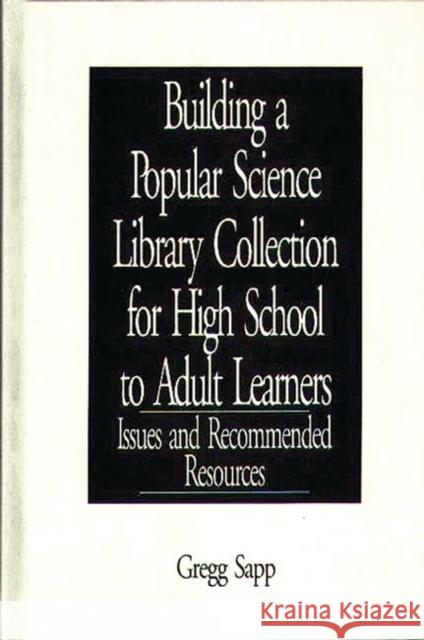Building a Popular Science Library Collection for High School to Adult Learners: Issues and Recommended Resources » książka
Building a Popular Science Library Collection for High School to Adult Learners: Issues and Recommended Resources
ISBN-13: 9780313289361 / Angielski / Twarda / 1995 / 344 str.
Building a Popular Science Library Collection for High School to Adult Learners: Issues and Recommended Resources
ISBN-13: 9780313289361 / Angielski / Twarda / 1995 / 344 str.
(netto: 219,60 VAT: 5%)
Najniższa cena z 30 dni: 228,69
ok. 30 dni roboczych.
Darmowa dostawa!
In response to the often-cited need to improve science literacy in the United States, this book examines how popular science information resources contribute to this goal and recommends nearly 2,500 significant titles--70 percent published since 1990--representing all fields of modern science. This guide provides librarians, educators, and other information specialists with an understanding of science literacy, as well as the knowledge of the skills and principles necessary to evaluate works of popular science. The annotated bibliographies are organized into nine subject areas and represent the body of current, significant popular literature for the entire discipline, including reference works, autobiography and biography, history of the discipline, and specific topics within the discipline. Nonprint resources are evaluated as well. This work will be valuable for collection development, making reference recommendations, and designing programmatic learning activities and is intended for public, high school, community college, and college and university librarians, as well as for science teachers.Librarians and information specialists must develop representative collections and be able to evaluate and recommend scientific information resources effectively. This work is unique in developing a unifying contextual background and linking popular science library collections to science literacy. Part One, Scientific Information, Popular Science, and Lifelong Learning, discusses historical and current issues related to popular science, science literacy, and information resources. Included is the most exhaustive discussion available of how to evaluate works of popular science. Part Two, Subject Guides to Popular Information Resources, is an annotated bibliography of 2,500 recommended print and nonprint works in general science, astronomy and space sciences, biological sciences, chemistry, mathematics, medicine and health sciences, natural history, physics, and technology and applied science. Each core entry contains a complete bibliographic citation, a 25-75 word descriptive and evaluative annotation, and a list of review sources. Annotations consider the resource's level of relevance, scope, comprehensibility, and uniqueness, and compare resources, especially the ways in which they complement or contrast with one another. Additional recommended titles contain a brief annotation.











